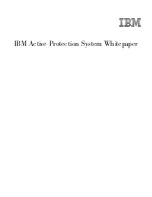
46
ExtremeWare XOS 10.1 Concepts Guide
Managing the Switch
name also points to the filter profile used to filter the notifications. Finally, the notification tags are
added to a notification table so that any target addresses using that tag will receive notifications.
Target Addresses
A target address is similar to the earlier concept of a trap receiver. To configure a target address, use the
following command:
configure snmpv3 add target-addr {hex} <addr_name> param {hex} <param_name> ipaddress
<ip_address> {volatile}
In configuring the target address you supply an address name that identifies the target address, a
parameters name that indicates the message processing model and security for the messages sent to the
target address, and the IP address and port for the receiver. The parameters name also is used to
indicate the filter profile used for notifications. The target parameters is discussed in “Target
Parameters” next.
To display target addresses, use the following command:
show snmpv3 target-addr {{hex} <addr_name>}
To delete a single target address or all target addresses, use the following command:
configure snmpv3 delete target-addr [{{hex} <addr_name>} | all]
Target Parameters
Target parameters specify the message processing model, security model, security level, and user name
(security name) used for messages sent to the target address. See “Message Processing” on page 42 and
“Users, Groups, and Security” on page 43 for more details on these topics. In addition, the target
parameter name used for a target address points to a filter profile used to filter notifications. When you
specify a filter profile, you associate it with a parameter name, so you need to create different target
parameter names if you use different filters for different target addresses.
To create a target parameter name, and set the message processing and security settings associated with
it, use the following command:
configure snmpv3 add target-params {hex} <param_name> user {hex} <user_name> mp-model
[snmpv1 | snmpv2c | snmpv3] sec-model [snmpv1 | snmpv2c | usm] {sec-level [noauth |
authnopriv | priv]} {volatile}
To display the options associated with a target parameters name, or all target parameters names, use the
following command:
show snmpv3 target-params {{hex} <target_params>}
To delete one or all the target parameters, use the following command:
configure snmpv3 delete target-params [{{hex} <param_name>} | all]
Filter Profiles and Filters
A filter profile is a collection of filters that specifies which notifications should be sent to a target
address. A filter is defined by a MIB subtree and mask, and by whether that subtree and mask is
included or excluded from notification.
Summary of Contents for ExtremeWare XOS 10.1
Page 12: ...12 ExtremeWare XOS 10 1 Concepts Guide Contents...
Page 15: ...Part 1 Using ExtremeWare XOS...
Page 16: ......
Page 20: ...20 ExtremeWare XOS 10 1 Concepts Guide ExtremeWare XOS Overview...
Page 32: ...32 ExtremeWare XOS 10 1 Concepts Guide Accessing the Switch...
Page 74: ...74 ExtremeWare XOS 10 1 Concepts Guide Virtual LANs VLANs...
Page 80: ...80 ExtremeWare XOS 10 1 Concepts Guide Forwarding Database FDB...
Page 112: ...112 ExtremeWare XOS 10 1 Concepts Guide Status Monitoring and Statistics...
Page 133: ...Part 2 Using Switching and Routing Protocols...
Page 134: ......
Page 174: ...174 ExtremeWare XOS 10 1 Concepts Guide Virtual Router Redundancy Protocol...
Page 184: ...184 ExtremeWare XOS 10 1 Concepts Guide IP Unicast Routing...
Page 202: ...202 ExtremeWare XOS 10 1 Concepts Guide Interior Gateway Protocols...
Page 216: ...216 ExtremeWare XOS 10 1 Concepts Guide Exterior Gateway Routing Protocols...
Page 224: ...224 ExtremeWare XOS 10 1 Concepts Guide IP Multicast Routing...
Page 225: ...Part 3 Appendixes...
Page 226: ......
Page 234: ...234 ExtremeWare XOS 10 1 Concepts Guide Software Upgrade and Boot Options...
Page 242: ...242 ExtremeWare XOS 10 1 Concepts Guide Troubleshooting...
Page 256: ...4 ExtremeWare XOS 10 1 Concepts Guide Index of Commands...
















































